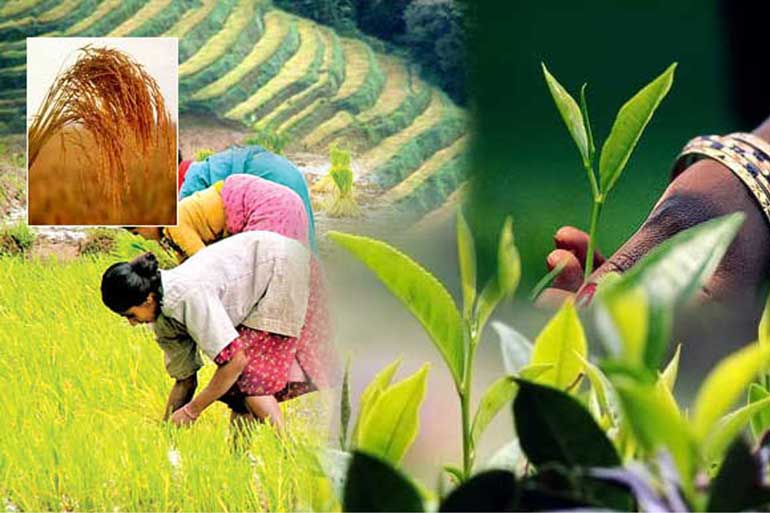
In the recent weeks we saw how the stock market has begun to pick up given the $ 1.5 billion IMF announcement towards Sri Lanka. Whilst the news is positive, a point to note is that this money can be also withdrawn without notice and that shock cannot be cushioned. In other words, Sri Lanka is getting connected to the global economy and unless stability is there, things can turn rough overnight. This puts pressure on the policymakers to ensure that market-driven decision-making takes place. If not, we will not be able to hold on to the positive trend that we have seen in the last few weeks and this in turn will affect the business confidence in the corporate world.
Skewness
If one does a deep dive on the current situation we see the Western Province continuing to dominate given the focused market reforms that took place in the 1980s and 1990s which was exploited by the Western Province whilst the others were not geared to do for many reasons, including the war that raged in the north east of the country at that time. However, given the development we now see in infrastructure, ports, road network, communication, ICT and of course tourism, we are sure to see a change in the dominance of the Western Province from the current 48% to a number as close at 35% in the next ten years, in my view. The logic being that when the basic infrastructure develops in an area, it enables the private sector to take advantage of the market reforms that come into place. This in turn can have a better representation on the business confidence given that the informal sector will be represented more.
Agriculture policy neglect
If we focus outside the Western Province on the rest of regions that are lagging behind on growth, it can be hypothesised that it is due to the absence of reforms, namely in the agricultural sector which is the mainstay economic engine that has resulted in the private sector not being able to exploit the opportunities in these regions. To be specific, the opportunities that exist in the global marketplace in the agricultural sector are tea, rubber and coconut which have been continuously neglected over time by the policymakers in the last fifty years or more in my view. It could also be summarised that regions that are lagging behind with lower GDP growth in the country are due to sector-specific development plans being a nonstarter. This cannot be just attributed to the private sector but more due to the macro policy reforms not taking off in the area of agriculture and thereby having a ripple effect on the sector.
Case in point – Tea
The best case in point is the tea industry where production has been hovering at around 300 million kilograms nationally whilst in the corporate sector from 140 million kilograms of tea at one time volumes came down to around 126 million in a three-year time period. A study done by the Tea Research Institute (TRI) states that, of the extent of Old Seedling Tea (OST) in Sri Lanka, almost 75% are in the corporate sector and the majority of these bushes are above 60 years in age and the senility of the bushes tend to have an impact on the declining tea volumes in the corporate sector. One can theorise that an aggressive replanting program must take place, but when the cost of manufacture and the net sales average merge, this argument does not hold ground from a business sense. In fact today, COP is exceeds NSA which has made the industry financially nonviable.
The alarming factor on the agriculture front is that if the sector does not get the focus due to the political economy at play as at now, within a seven-year time period, the TRI estimates that corporate sector tea production volumes can decline to a level as low as 80 million kilograms from the 140 million kilograms that was generated around ten years back. This drop in numbers accounts for around 45 million kilograms of tea and in value terms is equal to Rs. 12 billion, which is colossal to a sector of business accounting for around Rs. 40 billion per annum. A point that must be noted is that replanting one hectare of tea will cost almost Rs. 4 million. With a gestation period of seven years and the Internal Rate of Return (IRR) being just 13.7% as per TRI calculations, this investment becomes financially nonviable. One policy decision harped on by many strategists has been to increase the lease period of the privatised management contracts to around 66 years so that a new investment model can be done with at least two cycles of productivity runs on the life of a bush. But sadly this discussion has been limited to the newspapers in the last six years, which justifies the argument on the need for focus on agriculture.
Agriculture: keeps governments in power
We also have to keep in mind that there is a strong link between poverty and economic growth. Some reports state that poverty in the agricultural sector is as high as 40% and this tends to have a link to malnutrition levels. One can even go to the extent of linking the regions where reforms took place and the regions that were not ready accept these reforms and prove how agricultural defocus has led to these ramifications. Districts like Kilinochchi, Monaragala and Mullaitivu standing out is not a surprise in this context.
Whilst we can agree that agriculture has got lost in this economic template over the years due to strong growth seen in the industrial and service sector and of course the 30-year war that was in play, policymakers must note that it is agriculture that keeps a government in power due to the voter base and needs focus. The above example of tea is a real case in point where we see clear policy direction has not happened in the agricultural sector of Sri Lanka.
Food security
If I am to pick the key highlights of the global analysis that was done by a global expert that I have respect for – Paul Schulte commented: “Until powerful responses are seen globally on supplies, the high prices of merchandise will continue and war on food security will continue,”; a statement that caught my attention was from Glenn Maguire, Society General’s Chief Economist, who said: “Unless agricultural subsidies in countries like the US, Europe and Japan are taken off, production elsewhere becomes not profitable or cheaper,” which is so true, given the law of comparative advantage that works at a reverse end. Hence we see that agricultural neglect is not just an issue for Sri Lanka but it is a global issue and this impacts business confidence.
WTO needs more teeth
Maybe it’s time that organisations like the WTO should mandate legislation in each country so that there is a total ban on the use of food stuff like corn and palm oil in producing ethanol and biofuel. Maybe there should be also a ban on the use of commodities as financial instruments as it can exert undue pressure on the price mechanism of food products. The argument that this blocks free enterprise and profit taking by the more entrepreneurial private sector but sometimes the world requires regulation given that resources are scarce and even a small blip can drive many into poverty.
Next steps
The fact of the matter is that the availability of food to meet the needs of every citizen is the ultimate national security of any government. But what policy planners must take note of is that agriculture does not drive GDP of a country like the industrial sector or the service sector could. But the food security in a country definitely helps governments stay in power as mentioned before. This means that investment on agriculture should be a fundamental economic policy of any government if one is interested in being in power in the long. The key steps that can be implemented can be – driving at least 2% of GDP into research and development so that we can increase productivity levels in this sector which still practices age-old systems like manual irrigation.
We must infuse stronger supply chain management so that the 40% wastage that happens post harvest can be mitigated. For Sri Lanka, given that tea dominates the agriculture contribution, let’s correct the issue on tea where the cost of manufacture is outside the control of the producers given the wage structure is essentially decided by the political economy at play rather than the demand supply dynamics.





(The thoughts are strictly the authors’ personal views and have no link to the office he holds in the public or private sector.)
Discover Kapruka, the leading online shopping platform in Sri Lanka, where you can conveniently send Gifts and Flowers to your loved ones for any event including Valentine ’s Day. Explore a wide range of popular Shopping Categories on Kapruka, including Toys, Groceries, Electronics, Birthday Cakes, Fruits, Chocolates, Flower Bouquets, Clothing, Watches, Lingerie, Gift Sets and Jewellery. Also if you’re interested in selling with Kapruka, Partner Central by Kapruka is the best solution to start with. Moreover, through Kapruka Global Shop, you can also enjoy the convenience of purchasing products from renowned platforms like Amazon and eBay and have them delivered to Sri Lanka.
Discover Kapruka, the leading online shopping platform in Sri Lanka, where you can conveniently send Gifts and Flowers to your loved ones for any event including Valentine ’s Day. Explore a wide range of popular Shopping Categories on Kapruka, including Toys, Groceries, Electronics, Birthday Cakes, Fruits, Chocolates, Flower Bouquets, Clothing, Watches, Lingerie, Gift Sets and Jewellery. Also if you’re interested in selling with Kapruka, Partner Central by Kapruka is the best solution to start with. Moreover, through Kapruka Global Shop, you can also enjoy the convenience of purchasing products from renowned platforms like Amazon and eBay and have them delivered to Sri Lanka.





